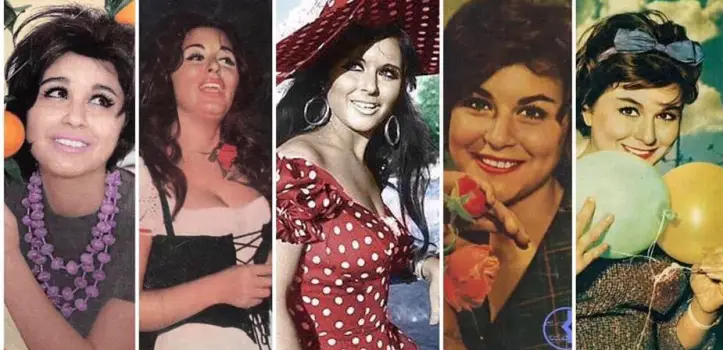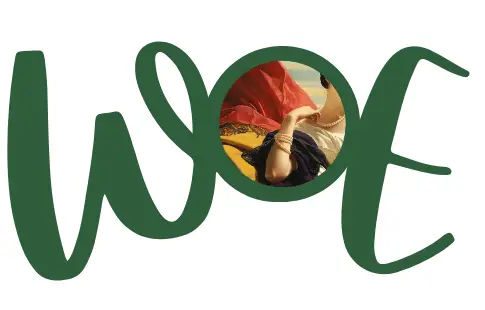More Than Just Your Cinderella: Beyond Soad Hosny’s Classic Tale
Friday June 21, 2019 By: Lara Ahmed

If there ever was an actress who could rightfully claim the title of Egypt’s sweetheart, she would be, without any challenge, the late, Soad Hosny. Dubbed as Cinderella of Egyptian Cinema, Hosny is more than just a pretty face or a sad story. She radiated confidence, and starred in over 80 movies. Throughout her career, she received numerous awards including, five awards from the Egyptian Ministry of Culture, Best Actress Award from the National Film Festival, Alexandria Film Festival, the Ministry of Media and Five Best Actress Awards from the Association of Egyptian Cinema, to mention a few. Moreover, in 1979, President Sadat awarded her The Lifetime Achievement Award. If this wasn’t reason enough to pay tribute to the legend, today also marks the 18th anniversary of her death.

Born in 1943, Soad Muhammad Kamal Hosny came from a humble home in Bulaq, Cairo. One of 17 children, Hosny had two sisters, and fourteen half-siblings, eight from her father’s first marriage, and six from her mother’s second marriage. The daughter of Syrian calligrapher and musician Mohamed Hosni, was no stranger to the world of art and entertainment. Moreover,she had a unique talent that was entirely hers, the ability to professionally perform without any or with minimum training. At the age of three, she joined the cast of the children’s television show “Papa Sharo” where she sang and dance. At that young age, she showedthe first twinkling of what quickly proved to be a bright future.

The year 1959 marked the official start of her blossoming career with her playing the leading role in the romantic movie Hassan and Nayima. One year later, she starred in five more movies, including The Girls and the Summer. Not the the kind of actress who shrank away in the presence of other film icons, Hosny worked with cinematic legends like Mariam Fakhr-el-Din, Shadia, and Taheya Cariokka, to mention a few. With her ability to don the hats of actress, singer, and dancer, whenever Hosny threw a hat into the ring, audiences knew she would own the game.
 Hosny resonated with and appealed to independent young women in the sixties who saw themselves in the mischievous gleam of her eyes. At first glance, she might easily be dismissed as being stereotypically gentle and simple-minded, but the values of the characters she played contributed to the gender equality movement in a unique subtle way. In the movie Take Care of ZouZou (1972), she displayed her courage in the role of a romantic yet determined student. The tides were visibly changing in Egypt in the sixties, calling for a cultural makeover to be reflected in its cinema. This theme was common in many of her films, such as the comedy The Rumor of Love (1960) and in Naguib Mahfouz adaptation of Cairo 30 (1966). The latter movie was not the only Mahfouz classic she starred in. Her movies The Choice and Karnak, both filmed in the seventies were also adapted and inspired by his novel, The Choice and novella Karnak Café.
Hosny resonated with and appealed to independent young women in the sixties who saw themselves in the mischievous gleam of her eyes. At first glance, she might easily be dismissed as being stereotypically gentle and simple-minded, but the values of the characters she played contributed to the gender equality movement in a unique subtle way. In the movie Take Care of ZouZou (1972), she displayed her courage in the role of a romantic yet determined student. The tides were visibly changing in Egypt in the sixties, calling for a cultural makeover to be reflected in its cinema. This theme was common in many of her films, such as the comedy The Rumor of Love (1960) and in Naguib Mahfouz adaptation of Cairo 30 (1966). The latter movie was not the only Mahfouz classic she starred in. Her movies The Choice and Karnak, both filmed in the seventies were also adapted and inspired by his novel, The Choice and novella Karnak Café.
 Her movies released in the 1970s onward proved she was becoming a more daring actress. The film Whom Should We Shoot? (1975) takes place in the political chaos of Egypt in that decade, and is one clear example of Hosny’s tougher side. Hosny often used the screen as a way to encourage audiences to fight cultural injustices rather than to temporarily escape from them. The 1980s were a less prolific time for the actress, but she starred in several movies including yet another Mahfouz adaptation, The Hunger (1986). She played her final role in The Shepherd and the Women (1991), directed by her ex-husband Ali Badrakhan.
Her movies released in the 1970s onward proved she was becoming a more daring actress. The film Whom Should We Shoot? (1975) takes place in the political chaos of Egypt in that decade, and is one clear example of Hosny’s tougher side. Hosny often used the screen as a way to encourage audiences to fight cultural injustices rather than to temporarily escape from them. The 1980s were a less prolific time for the actress, but she starred in several movies including yet another Mahfouz adaptation, The Hunger (1986). She played her final role in The Shepherd and the Women (1991), directed by her ex-husband Ali Badrakhan.
Romance lingered in the movie sets and Hosny had several relationships with the industry insiders. She first married cinematographer Salah Kurayyem in 1968. The marriage lasted a year. Two years later she married director Ali Badrakhan, the son of renowned director Ahmed Badrakhan. They met on the set of the movie Nadia where Badrakhn worked as assistant director to his father. Their marriage lasted 11 years. This was followed by a short-lived marriage to director Zaki Fateen Abdel-Wahab in 1981, the son of actress Leila Mourad and director Fatin Abdel-Wahab. Six years later, she married screenwriter Maher Awwad. They remained married until her tragic death.
 On June 18, 2001, Hosny’s body was found in the street in front of the building where her friend Nadia Yousri lived in London. She was 59 years old. At the time of her death, Hosny had been living with her friend for few weeks after her release from a London hospital, where she spent months receiving treatment for a spinal column injury. Both murder and suicide were quoted as the cause of her death. Even after all these years, no one really knows the truth behind her mysterious death.
On June 18, 2001, Hosny’s body was found in the street in front of the building where her friend Nadia Yousri lived in London. She was 59 years old. At the time of her death, Hosny had been living with her friend for few weeks after her release from a London hospital, where she spent months receiving treatment for a spinal column injury. Both murder and suicide were quoted as the cause of her death. Even after all these years, no one really knows the truth behind her mysterious death.
Nonetheless, whatever really happened on that fateful day of her death should not overshadow the brilliance of her roles, or drown out the sound of her nostalgic songs. With all the clichés and mystery used to describe Hosny, the world should never forget about her timeless quality. Films like Too Young for Love (1966) remarkably showcase her musical talent and acting charm. Hosny will continue to be our very own Cinderella as long as we remember that we didn’t like the poor girl because she was a gentle damsel in distress, but for her determination to rise against the odds and claim her crown.
***If you liked this article, don’t forget to subscribe to our newsletter and receive our articles by email.
